Advantages and disadvantages of Bonnel spring blocks
Content:
Anyone who has ever bought a sofa or bed at least once in their life knows that not only the appearance of the furniture is important, but also its internal content. Therefore, before making a choice, it is worthwhile to find out what a Bonnel spring unit is and compare it with other types of similar designs.
Manufacturers of sofas and beds mainly give preference to spring blocks, since they keep the shape of the furniture well, give it softness and elasticity, and resist sagging. It is from these components that the comfort and quality of sleep of a potential buyer are formed.
What are spring blocks?
Spring block - what is it? This is an internal filler used in the manufacture of mattresses and upholstered furniture. It is a design of springs interconnected in various ways and differently attached to the frame. Such designs allow you to maintain the spine of a person lying on them in the correct position.
The main types of spring blocks today are:
- Bonnel related to blocks of a dependent type;
- blocks with independent springs.
Both the first and second have their own advantages and disadvantages. Bonnel block is a classic of furniture production, it has been used for over a hundred years. Many consider it obsolete, but it, in addition to the affordable price, has other advantages. Modern mattresses with independent springs are considered more technologically advanced and comfortable, but they also cost significantly more. Let's consider this in more detail, starting with the characteristics of the Bonnel block.
Bonnel spring unit - what is it?
Sometimes the Bonnel is unknowingly confused with ordinary spring mattresses, which tend to sag quickly, and their springs jump out, glaring at the wearer's side. In fact, the production of Bonnel blocks uses a completely different technology. No wonder mattresses with such a “stuffing” are still in demand among millions of customers.
So what is it - Bonnel spring blocks? They are classified as dependent spring units. This means that all the elements in this design are interconnected. In its manufacture according to the Bonnel system, a special method of fastening biconical springs is used, in which the radius of the coil increases or decreases. They are narrowed in the center and expand around the edges, having a kind of "waist". Just this allows you to evenly distribute the load of the human body, while maintaining its correct position.
The springs are made of stainless steel, are interconnected by a special frame or steel high-carbon wire with nodes. So that they do not unwind on their own, fastening is done at the first and last turn to the block, which consists of two frames: the lower and upper. On the turns of the final spirals, special “locks” are made.
Specially designed springs are woven in a specific sequence. The method used in this case does not allow them to come into contact with each other, so that they do not creak or rub. Depending on the manufacturer, the number of springs is different: from 100 to 150 pcs. per 1 square. For example, the Bonnel spring block used in mattresses of the popular Ascona series is made with a density of 118 pcs. on 1 sq.m.
At the heart of an orthopedic mattress two types of weaving of springs can be used:
- four-turn;
- five-turn.
In the latter case, the block is slightly higher and will be slightly more expensive.
Bonnel Block Benefits
This design is able to provide the mattress with a very high level of reliability and elasticity. It can withstand a large load, it can easily be used by people weighing 115 kg or more. When the weight begins to put pressure on the spring, it hardens, allowing you to evenly distribute it. What is important - while avoiding friction and creaking. This effect is called "progressive resilience." The metal frame also gives the mattress stability, preventing the springs from swinging and shifting to the sides. These factors, as well as special heat treatment of the springs, giving them increased elasticity, significantly extend the life of the mattress. Bonnel spring blocks last an average of at least 15 years.
At the top of the layer of springs, layers of fillers are usually laid:
- felt;
- polyurethane;
- batting;
- spandbond;
- Wool
- coconut fiber;
- synthetic winterizer and other materials.
This is done to soften the feeling of the springs and at the same time increase the rigidity of the mattress itself. It creates additional comfort, increases air and moisture exchange.
This type of spring design is often used for the manufacture of sofas. The most popular are:
- book;
- accordion;
- Eurobook, as well as straight and angular models.
So, the main advantages of the Bonnel spring block can be called:
- ability to withstand heavy loads for a long time;
- the presence of an orthopedic effect;
- long-term preservation of elasticity;
- good air and moisture exchange;
- low price;
- reliability and durability.
As for mattresses with one-sided and two-sided surfaces, the former are the most budget option, often used in hotels, children's camps, sanatoriums, at various recreation centers. Mattresses with a double-sided surface, characterized by high quality and durability, are mainly purchased for personal homes and apartments and are still very popular.
Disadvantages of Bonnel Blocks
Despite all the obvious advantages, the Bonnel design is already considered somewhat outdated. Modern furniture manufacturers offer models of new spring blocks that surpass Bonnel in terms of their technical characteristics.
What can be attributed to the disadvantages of mattresses based on this system?
- In extremely rare cases, when the unit is operated with heavy loads, the mount may not withstand, break and straighten the spring. A strong spring breaks through both the filler and the cover. Sleeping in this place will no longer be possible.
- The orthopedic properties of the Bonnel system are not perfect enough. When using the mattress, the so-called “hammock effect” is noticeable when the springs located nearby are compressed. This is due to the fastening of the springs with the frame. This effect is especially noticeable if two people sleep in the bed: the excitement of the surface is felt by another person who does not create it himself.
- Bonnel spring-block mattresses are pressed over time, which, of course, is reflected in their convenience. To avoid this, it is recommended to turn the mattress about once every six months.
- After a few years, a creak may appear on the mattress, since under the influence of the load, the spring mounts are loosened. To eliminate this defect, manufacturers offer a more modern version in which the springs are reinforced with blocks of very dense polyurethane foam. This makes it possible to extend the product life by half, and increase the permissible load to 180 kg.
Tip
purityis.decorexpro.com/en/ recommends choosing a Bonnel for a single bed. But even as a matrimonial bed, it can be quite appropriate, if only the difference in the load on the berths would not be too large (preferably no more than 20 kg) so that the “hammock effect” mentioned above would not be created. And the increased durability of the structure has long been appreciated by children who adore jumping and playing on such mattresses without causing them any harm.
Despite certain shortcomings, Bonnel is an excellent option for those who want to maintain the optimal proportion of price and quality. To illustrate this more clearly, we compare Bonnel with more modern mattresses with an independent spring unit.
Independent spring unit
In this type of spring unit, for each spring, a separate cover is made of non-woven material - spunbond, fibertex and other similar.
Thus, it turns out that the independent springs in the mattress are not directly connected to each other. Any of them shrinks as the load is exerted on it and does not depend on the others. Typically, such structures are additionally glued with spanbond on both sides, which allows to withstand the geometric shape and dimensions of the block.
In blocks of this type, springs of a much smaller diameter are used when compared with Bonnel system springs. Accordingly, this increases their number by 1 square. m., thanks to which the mattress becomes more dense, elastic and flexible. The number of springs is usually from 265 to 1000 or more pieces per 1 square. m. However, experts say: the best option is no more than 350 pcs. per 1 square. m. In their opinion, if there are more springs, then they bend on the sides, touching others and dragging them along, and this does not affect the anatomical qualities of the product in the best way.
The price category of independent spring blocks is much higher compared to Bonnel blocks. Their manufacture is expensive, since each cylindrical or barrel-shaped spring must be sewn into a separate fabric pocket-pocket. And only then they are connected together. In this connection should be extremely concentric, so that each spring has the opportunity to fully demonstrate its elastic properties. This makes it possible to achieve an anatomical effect: the mattress follows the contours of the human body, the spine of a lying person remains flat, and the back muscles are relaxed. In combination with certain excipients, this will significantly reduce the risk of spinal diseases.
It should be noted that due to the high price, mattresses with an independent spring block are not accessible to everyone, unlike Bonnel blocks. That is why, for its simplicity, reliability and cost-effectiveness, Bonnel mattresses continue to remain no less popular than in the last century. Although their technology, of course, has been seriously improved, it didn’t affect the price increase - it still remained low and affordable.
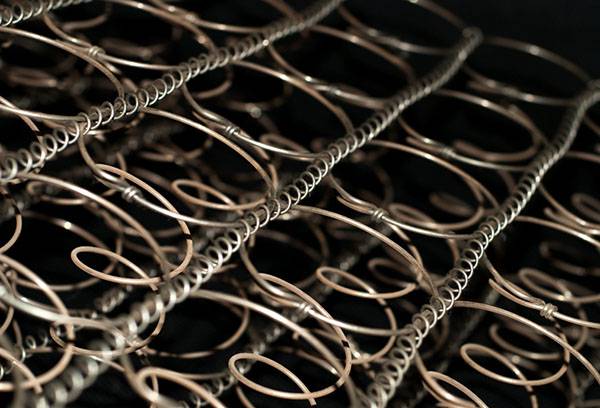
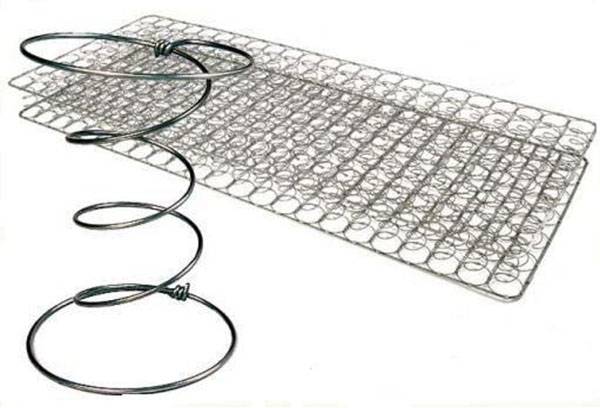
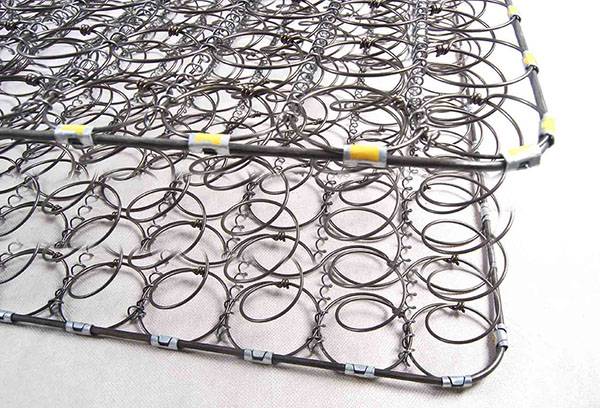
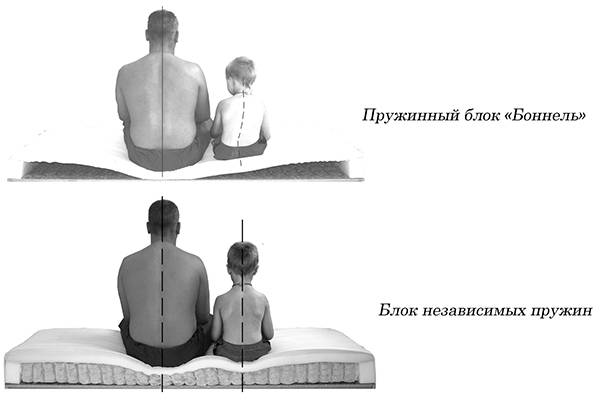
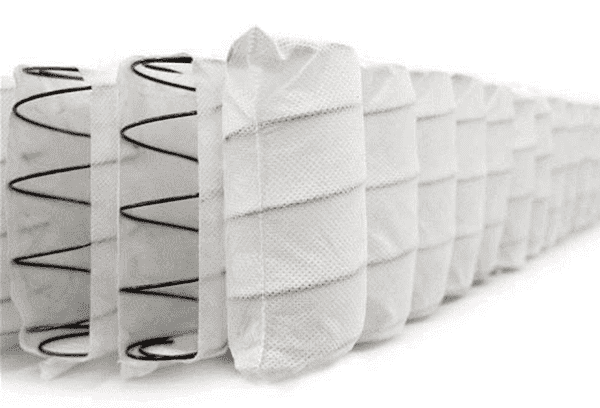
Thank you very much for the helpful information.